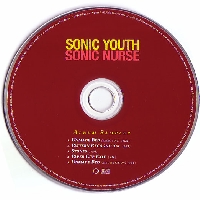
Frankie Knuckles, the late turntablist, is among their oft-cited influential figures. Hataya and Ogata were inspired by the driving beats of ‘90s house music. Synths and drum machines abound on the Japanese soundtrack, reflecting the pings, whirs, and wizzes of the levels themselves. From level to level and timezone to timezone, composers Naofumi Hataya and Masafumi Ogata prioritized feel over authentic instrumentation. The Japanese soundtrack, however, embraces the sounds that came before Sonic CD. It’s a marvel of genre exploration, but it doesn’t always play into the trope of Sonic being a cutting-edge character. “Palmtree Panic,” for example, takes distinctly samba-like percussion and pairs it with Latin guitars to emphasize the tropical scenery.Įach track is fine on its own, but the US soundtrack, despite delaying the game’s release by two months, is a more accomplished list of singles than a cohesive gaming soundtrack. Their tracks were governed by the type of genre diversity that I usually praise in gaming soundtracks.

In America, the music was composed by Spencer Nielsen and David Young. It’s important to acknowledge that this track is the intro for the Japanese OST, which is the focus of this review. The track is boastful and plays up the blue mammal as the obvious savior for the ensuing conflict.

The game’s intro theme song, alternatively known as “Toot Toot, Sonic Warrior,” establishes Sonic as more than a furry woodland creature that happens to encounter killer mechs and a deranged scientist. Robotnik has in store.Īll of this happens as “Sonic, You Can Do Anything” plays.

Not one to stray from a challenge, he races up the chains to thwart whatever plan Dr. Tumbling over crags and cliffs, Sonic sees Little Planet enchained. The FMV marked the most exposition for a Sonic story in the classic 2D series.
SONIC CD SOUNDTRACK LISTEN SERIES
The tech allowed for playback of higher quality files like the opening FMV, rivaled only by the Sonic The Hedgehog television series that debuted just five days before Sonic CD. It also boasted a Ricoh RF5C164 sound processor. The Sega CD was powered by a Motorola 68000 CPU, the same as the Genesis, but clocked at 12.5 megahertz compared to 7.6. The mouthpiece of this unique hybrid wind instrument reacts to lip and wind pressure to control additive synthesis which can be programmed to create a myriad of unique dynamic sounds.Though Sonic CD’s soundtrack stole the show, its glossy new animated intro was quick to turn heads.

The melodic brew of Fantasy, Space and New Age music features now-vintage analog synths including the Lyricon, a ground-breaking synthesizer/woodwind instrument developed in the early 70’s. In order to create their signature thickly-layered timbres, the husband and wife duo served as their own recording engineers, while simultaneously playing an array of monophonic synthesizers, sequencers, and acoustic instruments. Recorded and composed in their 4-track reel-to-reel home studio, and released as a cassette on “Stargate,” Emerald Web’s own record label, “Valley of the Birds” became one of the band’s best-known albums. The original reel-to-reel master tapes were baked for “sticky shed syndrome,” transferred to digital, and remastered for this official remastered album release. Originally released in 1981, this classic space music album is a rarefied blend of analog synthesizers, flutes and Lyricon by Bob Stohl and Kat Epple, who were pioneers in electronic music, New Age music, and audio technology. “Valley of the Birds (Remastered),” is the authorized version of the fourth album by vintage synthesizer duo Emerald Web.


 0 kommentar(er)
0 kommentar(er)
